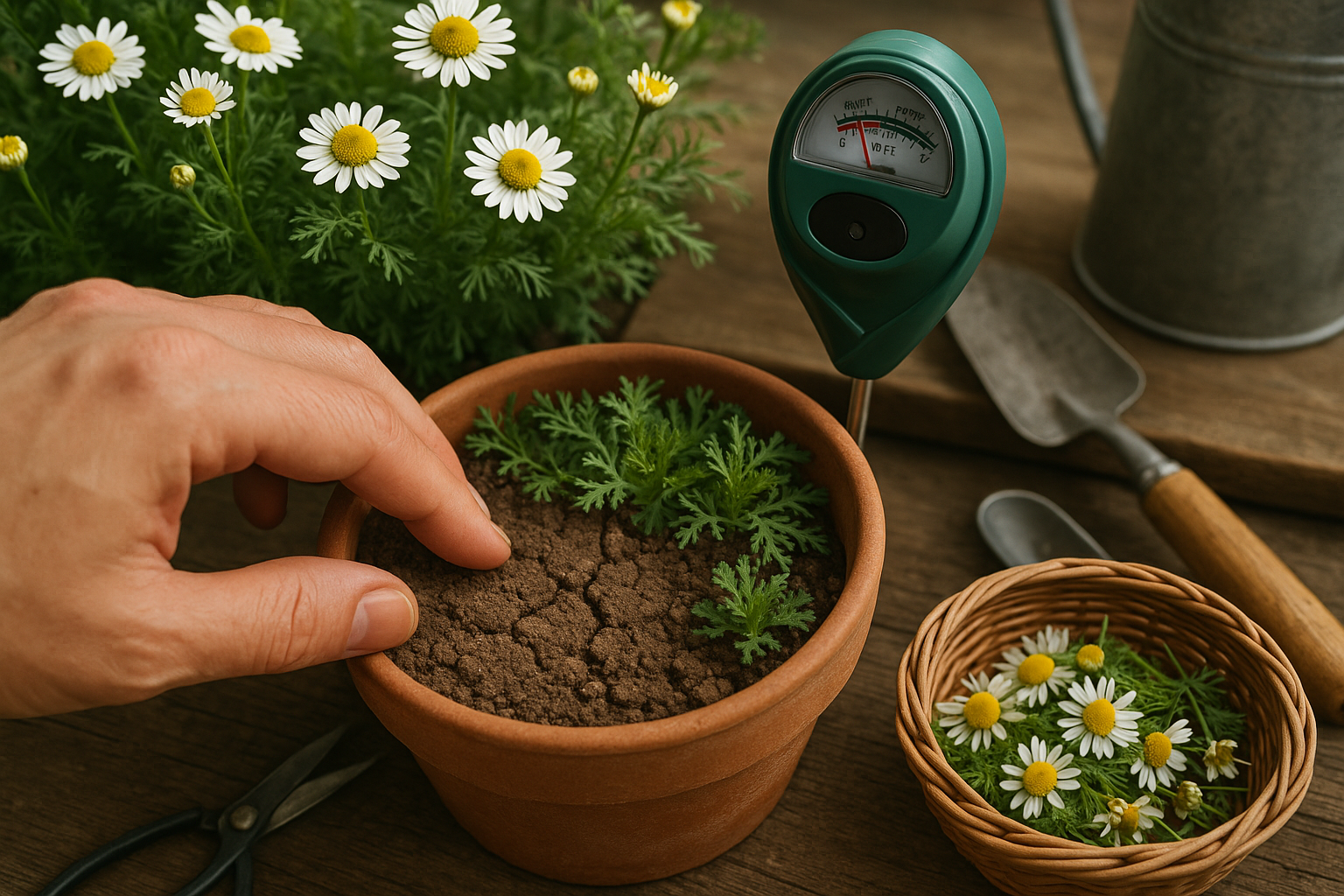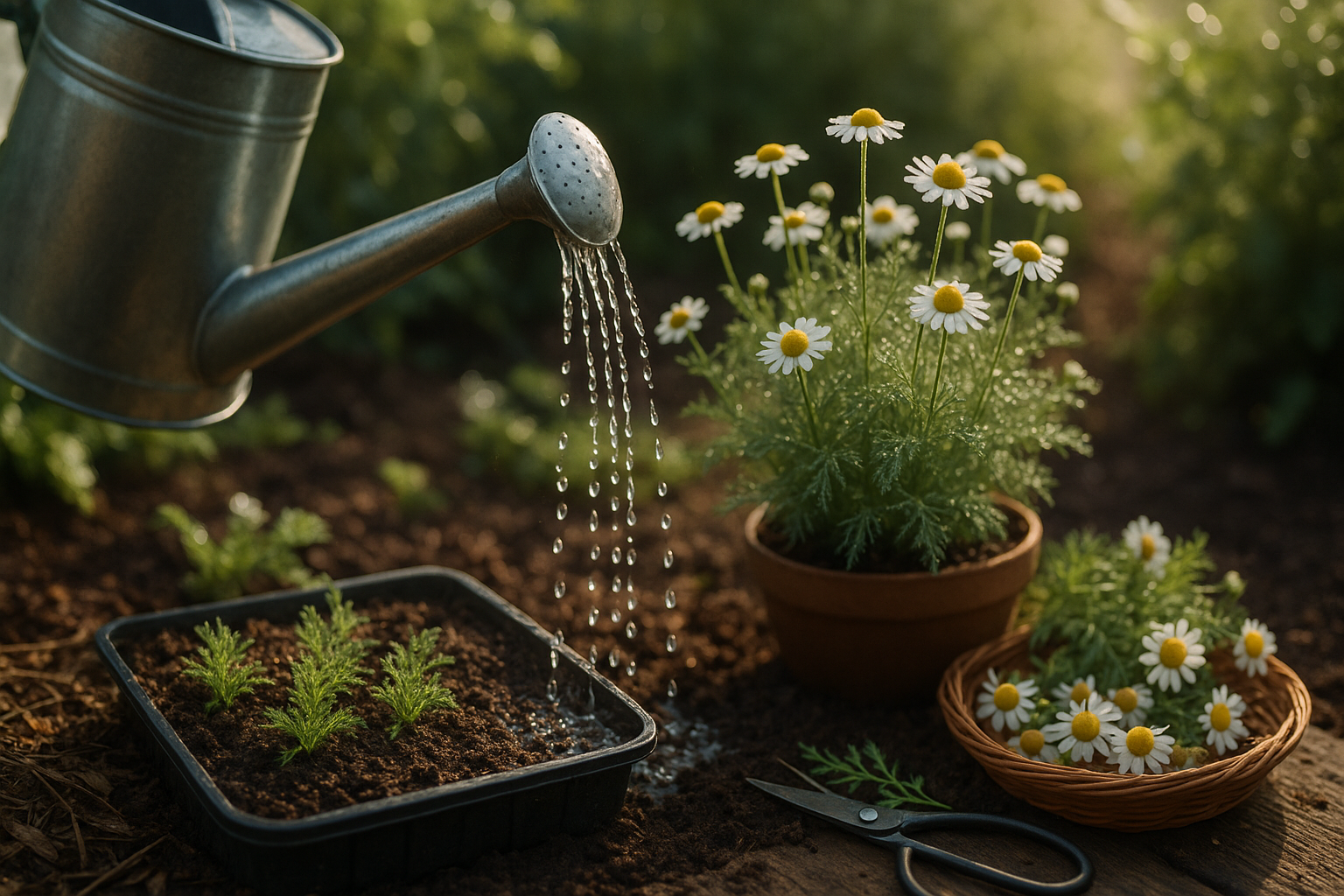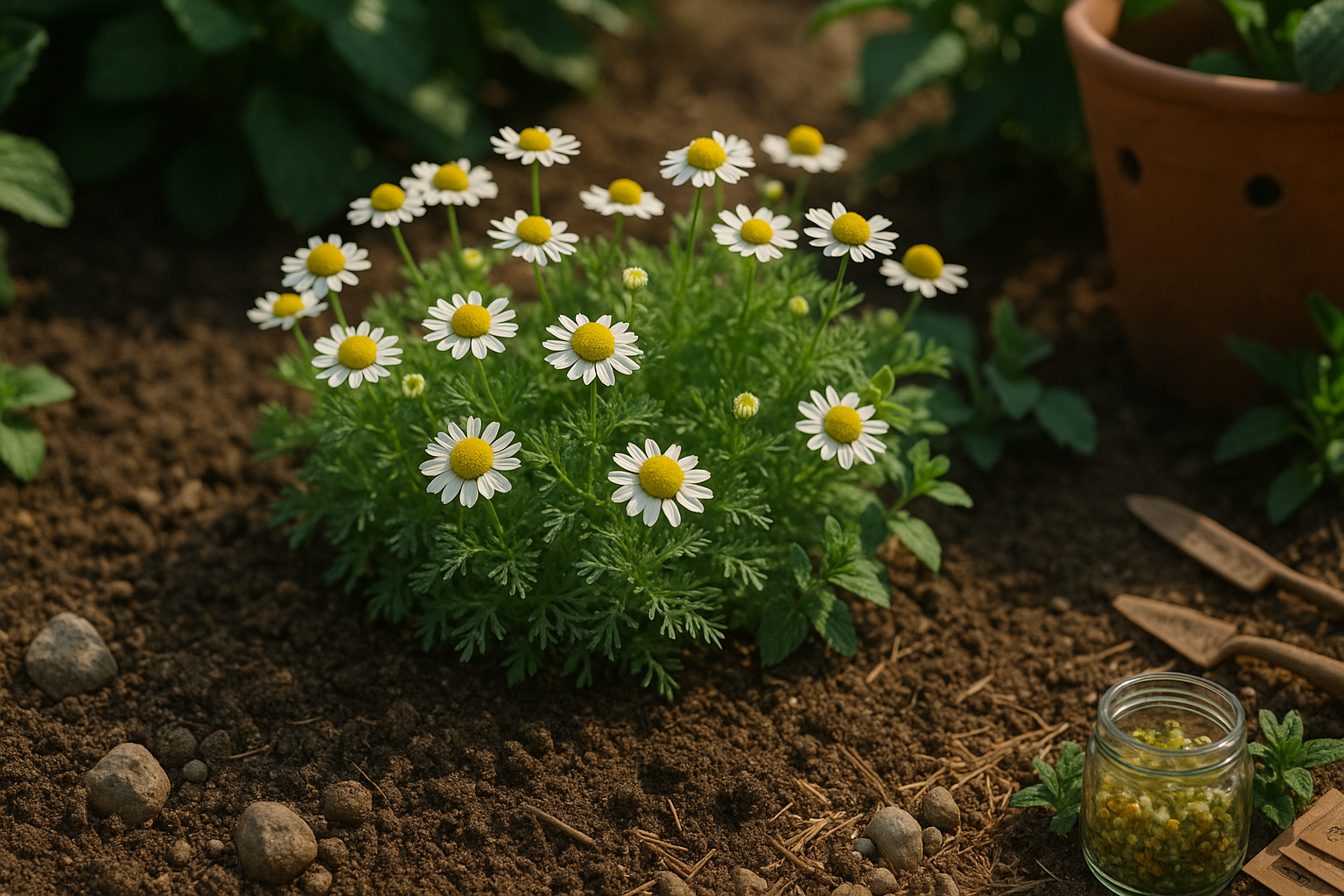Understanding Chamomile’s Water Needs

Chamomile is a charming herb known for its calming blooms and gentle fragrance, but successful cultivation starts with understanding its unique water needs. There are two main varieties—German chamomile (Matricaria chamomilla) and Roman chamomile (Chamaemelum nobile)—and both prefer soil that leans toward the dry side, rather than constantly moist ground.
This preference traces back to chamomile’s natural Mediterranean habitat, where the soil drains quickly after rain and never stays soggy for long. Overwatering can spell trouble by causing root rot, wilting, and yellowing leaves, so it’s best to let the top inch of soil dry before watering again.
On the flip side, underwatering will cause the plant to droop and slow flower production, signaling a need for more consistent—but still light—moisture. A good rule of thumb is to water thoroughly when the soil feels dry about an inch below the surface, especially during the hottest part of summer or if your chamomile grows in containers.
Avoid letting your plant sit in water, and ensure pots have drainage holes to mimic its natural conditions. Watch your chamomile’s leaves and flowers—if they look robust and are producing blooms, your watering routine is on track. If you notice leaves yellowing, wilting, or a stunted appearance, it’s time to check your watering schedule.
Remember, healthy chamomile thrives best when its roots can “breathe,” so err on the side of drier soil for optimal flowering and plant vitality.
When and How Often to Water Chamomile
Knowing when and how often to water chamomile is crucial for keeping your plants healthy and happy. Generally, chamomile prefers watering every 7–10 days during mild weather, especially when the top inch of soil feels dry to the touch.
Seasonal changes can affect this routine. During hot summer spells or windy days, you may need to water more frequently as the soil dries out quickly. Conversely, in cooler, rainy months, reduce watering to avoid soggy roots and potential rot.
Younger chamomile seedlings require more regular, gentle watering to help establish their shallow roots. However, as the plants mature, they become more drought-tolerant and can go longer between watering sessions.
To check if your chamomile needs water, simply poke your finger about an inch into the soil. If it feels dry, it’s time to water. You can also use a moisture meter for a quick readout—look for a reading in the middle range, avoiding extremes of dry or wet.
Potted chamomile dries out faster than those grown in the ground because containers heat up and lose moisture quickly. Check potted plants daily during hot weather and water when needed, making sure excess water can drain away properly.
In contrast, chamomile grown directly in the garden usually requires less frequent watering since the soil retains moisture better. Watering every 7–10 days is often enough, but always adjust based on weather and soil moisture checks.
As a real-world tip, it’s safer to underwater than overwater. Chamomile prefers slightly dry conditions over soggy soil, so if you’re unsure, err on the side of caution.
If you notice wilting or yellowing leaves, it’s a sign to double-check your soil’s moisture and adjust your watering schedule accordingly.
Watering Techniques for Healthy Chamomile

For healthy chamomile, deep and infrequent watering beats shallow, frequent splashes every time. By soaking the soil thoroughly and then letting it dry slightly before the next session, you encourage strong, deep roots that help your plants weather dry spells and stay vigorous.
Aim to water at the base of each plant rather than splashing the leaves—this targets the roots where moisture matters most and also helps keep the foliage dry, which is important for preventing mildew or other fungal diseases. It’s best to do this in the early morning; this way, any leaves that do get wet have time to dry out in the day’s sun, further reducing disease risk.
When watering, check the soil a couple of inches down—if it feels dry, it’s time to water; if it’s still a bit moist, wait another day. You’ll know you’re watering just right if the chamomile shows steady growth with upright stems and perky, uncurled leaves.
Signs of underwatering include wilted, floppy stems and dull, limp leaves that might yellow at the edges. On the other hand, if you notice yellowing lower leaves or moldy patches at the soil surface, you might be overwatering.
For potted chamomile, lift the container—if it feels light, it probably needs water. For in-ground plants, stick your finger into the soil to check.
By focusing on deep, well-timed watering at the roots, you’ll set your chamomile up for lush, healthy blooms all season long.
Adapting Watering to Your Growing Conditions
Watering chamomile effectively means understanding how different growing conditions affect its moisture needs. Potted chamomile dries out more quickly than plants grown in garden beds because containers drain and evaporate water faster, especially in warm or windy conditions.
In contrast, garden-grown chamomile benefits from deeper soil that holds moisture longer but risks waterlogging during heavy rain or in areas with poor drainage. Your local climate plays a big role—hot, dry areas pull moisture from the soil and pots rapidly, so check the soil daily and water more often, especially during droughts or intense heat.
In humid climates, evaporation slows down, so you can water less frequently, but be sure to watch for fungal issues. After rainfall, let the ground dry a bit before watering again.
Chamomile’s watering needs also depend on soil type:
- Sandy soils drain quickly and need more frequent watering.
- Loamy soils retain moisture well and require less attention.
- Clay soils hold onto water but risk suffocating roots, so water less often but ensure good drainage.
Mulching is a smart trick—lay down a layer of straw, shredded leaves, or fine bark around your plants to lock in ground moisture and keep roots cool, reducing how often you need to water.
If your soil is too sandy or clay-heavy, mix in plenty of compost or organic matter to improve its structure and help it hold water without becoming boggy. Adapting your watering approach based on these factors keeps chamomile healthy, resilient, and ready to bloom.
Preventing Overwatering and Underwatering
Knowing how to spot the signs of overwatering and underwatering can make all the difference in your plant’s health. Overwatering often shows up as yellowing leaves, mushy stems, or the dreaded root rot—a foul smell or blackened roots when you check the soil. Underwatering, on the other hand, typically causes wilting, crisp brown leaf edges, and dry, shrinking soil pulling away from the pot’s edge.
If you notice symptoms of overwatering, let the soil dry out before the next watering, and check that your pot has drainage holes. For root rot, gently remove the plant, trim off affected roots, and repot it in fresh, dry soil.
When underwatering signs appear, water your plant thoroughly so excess water drains out the bottom, and consider misting the leaves for extra humidity.
In both cases, it’s crucial to reset your watering routine:
- Test the soil moisture by sticking a finger an inch down—only water when it feels dry.
- Observe your plant’s response and adjust accordingly; factors like season, pot size, and room temperature affect how quickly the soil dries.
Rather than following a strict schedule, aim to check in with your plant regularly. This flexible approach—guided by symptoms and real-time observation—helps create healthier, happier plants adapted to their living space.
Quick Care Tips and FAQs
Always check the soil before watering—stick your finger about an inch deep; if it feels dry, it’s time to water.
Water plants early in the morning or late in the afternoon to minimize evaporation loss and prevent leaf scorch.
Use a gentle pour or a watering can with a fine spout for young seedlings to avoid washing them away.
Ensure pots have drainage holes to prevent soggy roots and root rot.
Deep watering less often is better than frequent shallow watering, as it encourages healthy root growth.
Adjust your watering schedule with the seasons—plants usually need less in winter.
Can You Use Tap Water?
Yes, for most houseplants, tap water is fine, but let it sit out overnight if you’re concerned about chlorine or fluoride sensitivity. For very sensitive plants, filtered or rainwater is ideal.
When watering seedlings, use a spray bottle or gentle drizzle, aiming to keep the soil moist but not soaked—too much water can cause damping off, a common seedling disease.
Above all, let your plants guide you. Drooping leaves or dry soil are signs they’re thirsty, while yellowing or mushy leaves can mean you’re overwatering. Every plant, pot, and home environment is different, so keep a watchful eye and adjust as you go.
